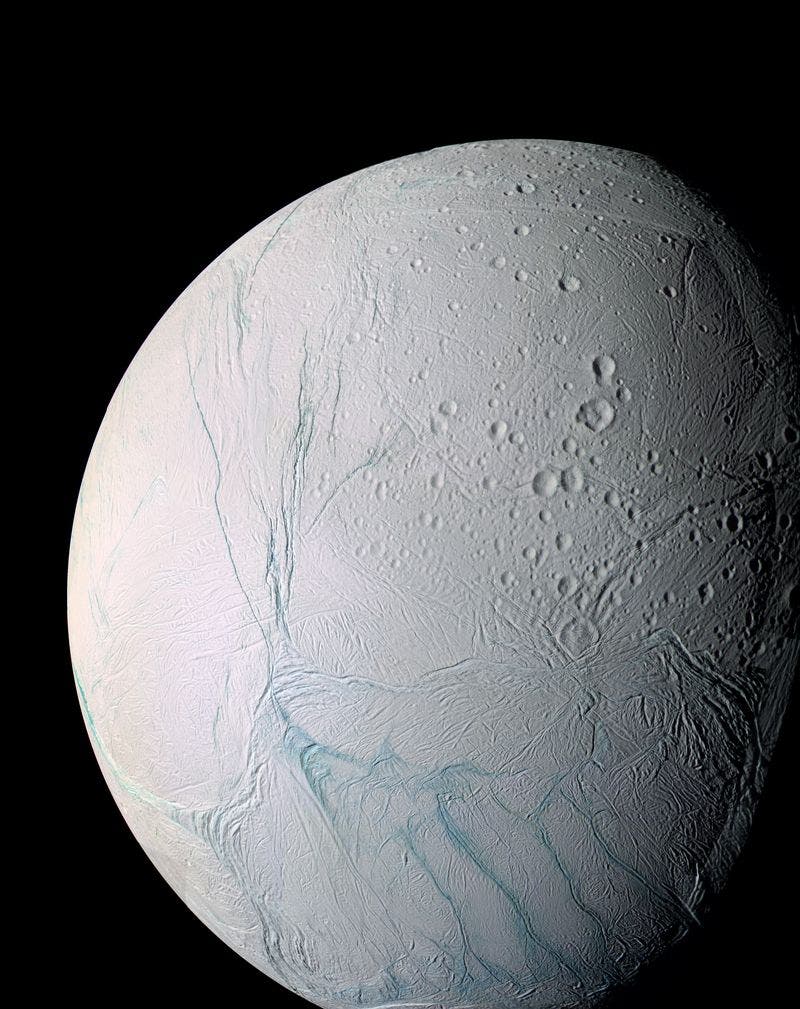The new NASA-funded study showed that if the icy surface of Pluto’s giant moon Charon is cracked, analyzing the fractures could show if the interior was warm and perhaps warm enough to have maintained a subterranean ocean of liquid water.
Pluto is the most distant planetoid (no longer a planet, sorry) in the solar system. It’s extremely far from us, as it orbits the sun over 29 times faster than the Earth. The surface temperature estimated is approximately 380 degrees below zero Fahrenheit (around minus 229 degrees Celsius), which means it is way too cold to allow liquid water on its surface. Pluto’s moons are no less frigid than the planet they orbit around. Since until further investigation it is highly difficult to draw any conclusions, in July 2015 NASA’s New Horizons spacecraft will be the first to visit Pluto and Charon, and a much more detailed observation will be provided to the scientists.
‘Our model predicts different fracture patterns on the surface of Charon depending on the thickness of its surface ice, the structure of the moon’s interior and how easily it deforms, an how its orbit evolved. By comparing the actual New Horizons observations of Charon to the various predictions, we can see what fits best and discover if Charon could have had a subsurface ocean in its past, driven by high eccentricity,’ declared Alyssa Rhoden of NASA’s Goddard Space Flight Center in Greenbelt, Maryland, who is lead author of a paper on this research.
There are some moons around the gas giant planets in the outer solar system that have cracked surfaces with evidence for ocean interiors – Jupiter’s moon Europa and Saturn’s moon Enceladus are just two examples of this kind. Concerning Charon, the study finds that a past high eccentricity could have been the cause for high tides, causing friction and surface fractures.
Compared to Pluto, this moon is suspiciously massive, about one-eighth of its mass, an undoubted solar system record. And it’s thought to have formed even much closer to Pluto, as a result of a giant impact ejecting material off the planet’s surface. The material went, thus, into orbit around Pluto and coalesced under its own gravity to form Charon, along with other smaller moons.
The gravity between Pluto and Charon caused their surfaces to bulge toward each other, so there were strong tides on both worlds at the beginning. The friction resulting from this is believed to have caused the tides to slightly lag behind their orbit positions. The lag is believed to act like a brake on Pluto, which causes its rotation to slow while transferring the rotational energy to Charon. This, at its turn, makes the moon speed up and move farther away from Pluto.
‘Depending on exactly how Charon’s orbit evolved, particularly if we went through a high-eccentricity phase, there may have been enough heat from tidal deformation to maintain liquid water beneath the surface of Charon for some time. Using plausible interior structure models that include an ocean, we found that it wouldn’t have taken much eccentricity to generate surface fractures like we are seeing on Europa’, declared Roden.
According exclusively to the observations by telescopes, Charon’s orbit is in a stable end state – a circular orbit with the rotation of both Pluto and Charon slowed to the point where they always show the same side to each other. It’s this orbit that’s expected to generate significant tides, so there’s the possibility for any ancient underground ocean to be frozen, according to the scientist.
Considering the fact that liquid water is believed to be essential in order to detect any known forms of life, the oceans in Europa and Enceladus are believed to be the places where there’s the possibility to found extraterrestrial life. However, a usable energy source is also required to maintain life, along with many key elements (among which carbon, nitrogen, phosphorus). Since there is no knowledge of the oceans harboring these additional ingredients, or if they existed for a period of time enough for life to form, the same questions apply to any other ancient ocean that may have existed beneath the icy crust of Charon.
The research was founded by the NASA Postdoctoral Program at the NASA Goddard Space Flight Center, which is administrated by Oak Ridge Associated Universities, and NASA Headquarters through the Science Innovation Fund.












